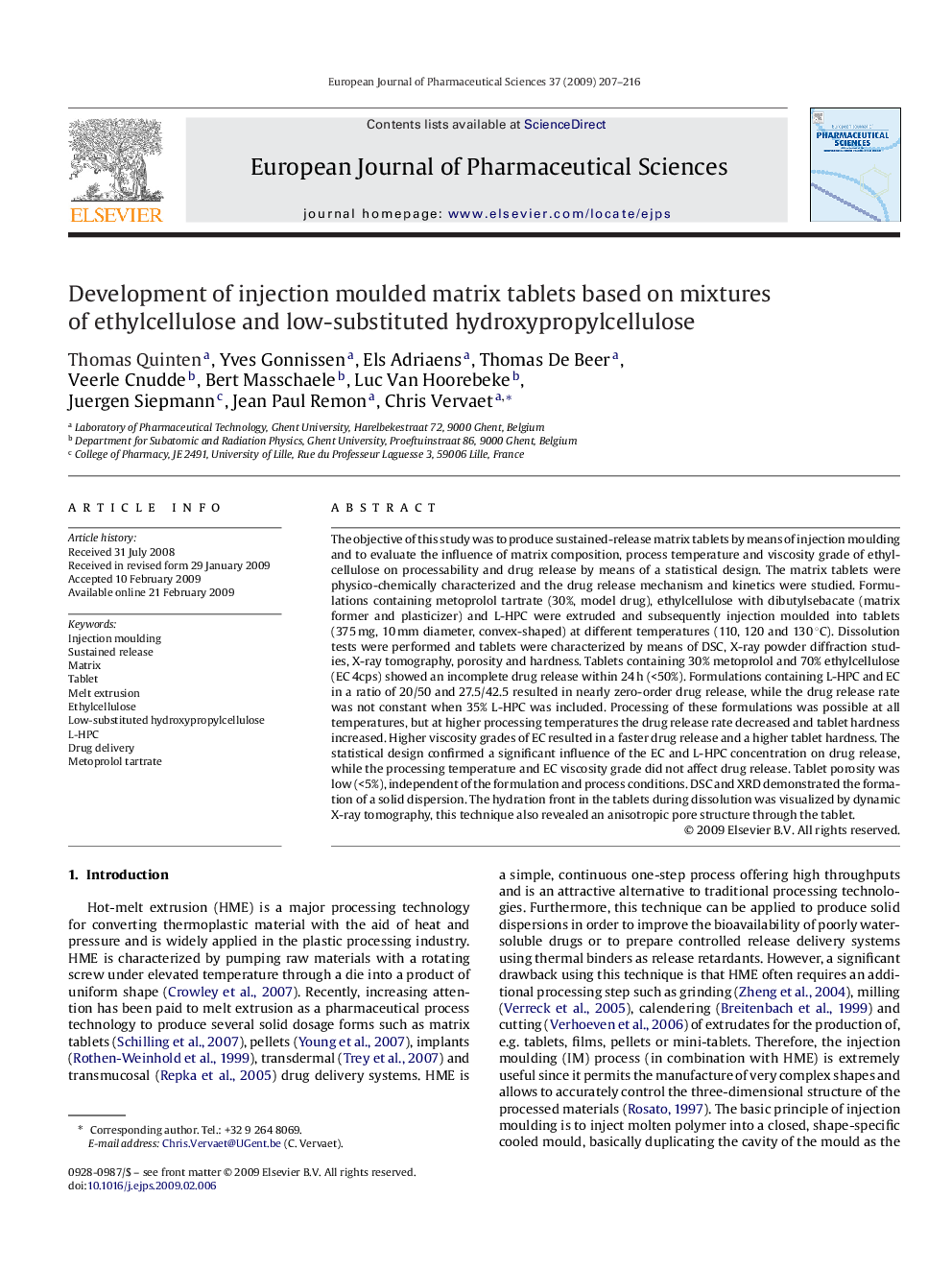| کد مقاله | کد نشریه | سال انتشار | مقاله انگلیسی | نسخه تمام متن |
|---|---|---|---|---|
| 2481672 | 1556258 | 2009 | 10 صفحه PDF | دانلود رایگان |

The objective of this study was to produce sustained-release matrix tablets by means of injection moulding and to evaluate the influence of matrix composition, process temperature and viscosity grade of ethylcellulose on processability and drug release by means of a statistical design. The matrix tablets were physico-chemically characterized and the drug release mechanism and kinetics were studied. Formulations containing metoprolol tartrate (30%, model drug), ethylcellulose with dibutylsebacate (matrix former and plasticizer) and L-HPC were extruded and subsequently injection moulded into tablets (375 mg, 10 mm diameter, convex-shaped) at different temperatures (110, 120 and 130 °C). Dissolution tests were performed and tablets were characterized by means of DSC, X-ray powder diffraction studies, X-ray tomography, porosity and hardness. Tablets containing 30% metoprolol and 70% ethylcellulose (EC 4cps) showed an incomplete drug release within 24 h (<50%). Formulations containing L-HPC and EC in a ratio of 20/50 and 27.5/42.5 resulted in nearly zero-order drug release, while the drug release rate was not constant when 35% L-HPC was included. Processing of these formulations was possible at all temperatures, but at higher processing temperatures the drug release rate decreased and tablet hardness increased. Higher viscosity grades of EC resulted in a faster drug release and a higher tablet hardness. The statistical design confirmed a significant influence of the EC and L-HPC concentration on drug release, while the processing temperature and EC viscosity grade did not affect drug release. Tablet porosity was low (<5%), independent of the formulation and process conditions. DSC and XRD demonstrated the formation of a solid dispersion. The hydration front in the tablets during dissolution was visualized by dynamic X-ray tomography, this technique also revealed an anisotropic pore structure through the tablet.
Journal: European Journal of Pharmaceutical Sciences - Volume 37, Issues 3–4, 28 June 2009, Pages 207–216